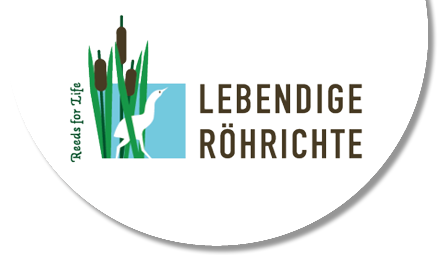Reeds are plant populations mostly made up of very few plant species that grow on the bank or in the shore area of water bodies. The most well-known is probably the common reed (Phragmitetum australis). In the Natura2000 area “Bienen Old Rhine, Millinger Sea and Hurler Sea nature conservation area and Empel Sea nature conservation area”, in addition to common reed, there is also great manna grass (Glycerietum maximae), reed canary grass (Phalaridetum arundinaceae), calmus (Acoretum calami), bulrush (Scirpetum lacustris), broadleaf cattail (Typhetum latifoliae), narrowleaf cattail (Typhetum angustifoliae) and branched bur-reed (Sparganietum erecti).
Several mappings have identified a fall in the tall reeds on the Bienen Old Rhine. Since 1995, populations of tall reeds there have fallen by 65 % and populations of cattail by as much as 96 %. In 2015, the Nature Conservation Centre found evidence that the eating habits of the coypu were having a decisive influence on the decline in cattail.
The two characteristic species of cattail in the project area are the broadleaf cattail (Typha latifolia) and the narrowleaf cattail (Typha angustifolia). The two species are easy to see from July, identified by their flowers, the long, brown cob. As the name suggests, the leaves of the narrowlead cattail at 0.3-1 cm are narrower than those of the broadleaf cattail (1-2 cm).
Bedeutung
Das Röhricht als Lebensraum ist für viele verschiedene Tierarten sehr wertvoll. Es beherbergt in der Regel zwar nur wenige Pflanzenarten, aber durch seine Lage zwischen freier Wasserfläche und dem Land ist zum Beispiel für Vögel das Nahrungs- und Brutplatzangebot sehr groß, denn sie können beide Areale nutzen. Die hohen und hohlen Stängel von Rohrkolben und Co. sind außerdem ein wertvoller Überwinterungsraum für Insekten. Für die Fisch- und Libellenfauna ist das Röhricht ein wichtiger Reproduktions- und Rückzugsraum.






